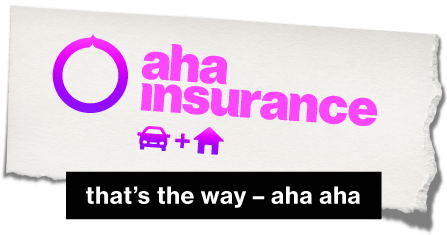In order to legally drive your car on the road in Ontario, drivers must have a valid licence and auto insurance. If you are in the auto insurance market but are unsure what types you need, don’t worry. We’ve got you covered. Let’s look at the 3 most common types of car insurance in Ontario.
There are mainly three types of car insurance in Ontario: liability, collision and comprehensive. Let’s start with a basic understanding of each.
Third-party liability coverage is your basic level of car insurance coverage. It is mandatory all across Canada. Liability protects drivers from legal responsibility in the event that they cause property damage or bodily injury to a third party. If a driver is in an at-fault collision and kills or injures a person, such as a passenger, another driver or a pedestrian, their liability coverage would kick in to cover any legal fees or associated medical costs (up to the policy limit).
Collision coverage is a popular optional coverage. It helps cover the cost of repairing your car if you hit another vehicle, a stationary object or a person. Keep in mind that if you lease or finance your vehicle, this coverage will also be mandatory. It is only optional if you own your vehicle.
Comprehensive is another popular optional coverage. It protects your vehicle from everything else, such as fire, severe weather, flooding, vandalism and theft. Basically, it protects you from a broad range of perils that can damage your vehicle while parked. Furthermore, it includes coverage if you hit an animal, such as a deer, that causes damage because you are not at fault. Generally, comprehensive coverage is sold alongside collision coverage. Also, if someone does not have liability because they are not driving their car, they often still purchase comprehensive coverage to protect the vehicle even while not in use.
3 Types of Car Insurance in Ontario: Frequently Asked Questions
What is the most important type of insurance you should buy?
The most important type of automobile insurance is third-party liability coverage, and not just because it is mandatory. Accidents can happen at any time, even to the safest driver. That’s why it is essential for you to have the right amount of coverage to protect yourself, especially if you are found to be at fault for the accident.
Your liability insurance covers the following:
● Legal fees
● Medical bills
● Settlement costs
● Repairs or damages to a third party’s property
You can avoid the potential risk of paying out of pocket for someone’s repairs, medical bills, or legal fees by ensuring you have enough liability coverage.
Considering the 3 most common types of car insurance in Ontario, what is the most important part of an insurance policy?
Your agreement and the definitions are the two most important components of an insurance policy. You need to know what is covered in your policy and what it means.
Your agreement, also referred to as coverage, states what your insurer has agreed to provide in exchange for your premium or has agreed to pay for. It will declare what your policy will and will not cover, such as restrictions, limitations and exclusions.
The definitions will have its own section in the policy. It will contain many words that have unique meanings when used in insurance. It is essential for policyholders to read over the definitions and ensure they understand them because they may restrict or limit your coverage.
Some definitions you will want to research are loss, insured, policy period, claim and wrongful act. Within these definitions, you will find information regarding if and for whom your policy will provide coverage after an incident.
What does the most basic insurance cover with the 3 most common types of car insurance in Ontario?
The most basic auto insurance coverage includes third-party liability insurance, accident benefits coverage, uninsured motorist protection and direct compensation coverage. These four coverages are mandatory for auto insurance in Ontario; thus, when you purchase liability insurance, the other three are automatically added.
As mentioned, third-party liability protects drivers from legal liability if they cause property damage or bodily injury to a third party. It covers legal fees, medical bills, court settlement costs and any repairs or damages to a third party’s property up to your coverage limit.
Suppose you, your passenger, a cyclist or a pedestrian are injured in a collision. In that case, accident benefits coverage helps pay for income replacement, rehabilitation, attendant care, funeral expenses and more, regardless of who is at fault.
If you are involved in a collision with another driver who does not have auto insurance or a hit-and-run, uninsured motorist protection ensures you are covered for injuries, damages and other associated costs up to your coverage limit. Uninsured motorist protection kicks in for the following:
● When an uninsured motorist injures or kills you.
● When a hit-and-run injures or kills you.
● When an uninsured motorist damages your vehicle.
● When an uninsured motorist injures or kills a driver while they are not in their car (e.g., walking, changing a tire on the side of a road, etc.).
With direct compensation property damage coverage (DCPD), your insurer pays for your vehicle repairs after an automobile accident. This is part of Ontario’s no-fault system, so your insurer pays even though the other driver is at fault. It also speeds up the claim process because you are dealing with your own insurance company.
How much insurance do I need?
The minimum amount of required car insurance varies from province to province. In Ontario, you are legally obligated to carry a minimum of $200,000 in liability coverage. However, you may want to consider increasing it. It may sound like a significant amount, but if you suddenly find yourself facing a lawsuit after being in a collision, ask yourself if $200,000 would be enough to cover damages, legal fees and any other associated costs.
For example, suppose the other driver was awarded $300,000 in damages, and you only have a $200,000 coverage. In that case, you will have to pay that additional $100,000 out of pocket, plus any additional legal fees. Also, if any passengers in your vehicle were injured in the collision, they could also sue you for damages. Suddenly you are paying out of pocket for the additional fees from the first suit, followed by any awarded damages for the passengers as well.
It all adds up quickly. This is why most people choose to carry $1 million to $2 million in third-party liability coverage. In fact, many insurance companies only offer $1 million or $2 million for liability coverage. The amount it will cost to increase your minimum is very minimal, and it could save you significantly in the long run.
As for collision and comprehensive, if you have an expensive car, you should seriously consider adding both to your insurance. To learn more about how much insurance coverage is right for you, speak with one of our insurance professionals to discuss your options for increasing some or all these minimums to meet your particular needs.
How is the insurance calculated for these 3 Types of Insurance in Ontario?
There are several factors that affect how your insurance is calculated. Below is a list of what your insurance company needs to know to calculate your car insurance rate.
Vehicle information
First, they need to know the year, make and model of your vehicle. This is because every model has a varying level of risk to it, which will affect whether your premiums are higher or lower. For example, some models are easier to break into, others have better safety standards, and some cost more to repair. How much it will cost to repair or replace your vehicle will heavily affect your premiums. They will also want to know the vehicle’s information number (VIN) and how much you purchased it for.
Next, your insurance company will ask about how often you drive your vehicle and why. A car that is driven daily for commuting purposes is more likely to be in an accident than one that is only driven occasionally for pleasure. Also, if you use your vehicle for work, depending on how much and what for, you may need to add on business use insurance or purchase commercial auto insurance.
Lastly, they will want to know the location of the vehicle when parked (e.g., garage, street, driveway). A car that is parked on the street is more likely to be stolen or vandalized, damaged in a storm or hit by another vehicle. In contrast, a vehicle that is parked inside a locked garage is significantly less likely to be damaged and would therefore require less coverage.
Driver information
Your insurer will need to know your name, date of birth and driver’s license number. They will also want to know where you live, as this, too, affects your premiums. For example, if you live in a heavily populated area, like a city centre, your insurer would consider your vehicle to be at a higher risk of theft, vandalism and accident claims than if you lived out in the county or small town.
Additionally, they will need to know your driving record, including the following:
● Your driving experience
● Any driving infractors or convictions
● How many accidents have you had
● Any speeding tickets you have had
Furthermore, they will also need to know about anyone else who may be driving your vehicle, including each of their driving records.
How do I choose a good insurance policy?
It is important to understand how an insurance policy works before you choose the right one for you. As we mentioned previously, there are four main components to an insurance policy: premium, policy limit, deductible and exclusions. The premium is your policy’s price, determined by your insurer. The policy limit is the maximum amount your insurer will pay out if you are in a car accident. The deducible is how much you and your insurer decide you have to pay out of pocket before receiving your insurance claim. Finally, an exclusion is what is not covered by your standard insurance policy.
We understand that finding the right insurance policy can be overwhelming. There is so much more to it than just the price. As there are several things to consider when searching for the best insurance policy, here are some tips we put together to help make your experience better!
1. Determine how much coverage you and your car need, then figure out how much you can afford.
2. Customer service is a big part of it. You want to make sure that the company you choose is responsive and has a good reputation.
3. Always shop around and compare quotes from different insurance companies, as each one will offer its own rate.
4. Read through the exclusions carefully so that you fully understand what is not included in the policy.
Remember that you do not have to stick with the same policy. Shopping around every few years will often find you better rates!





